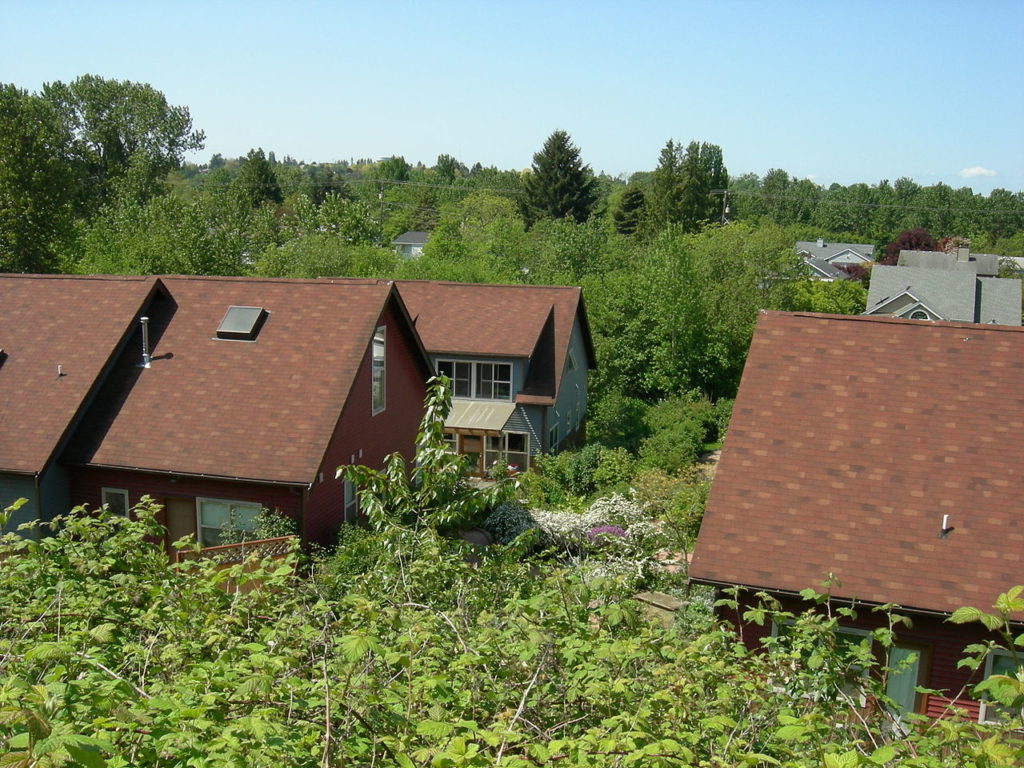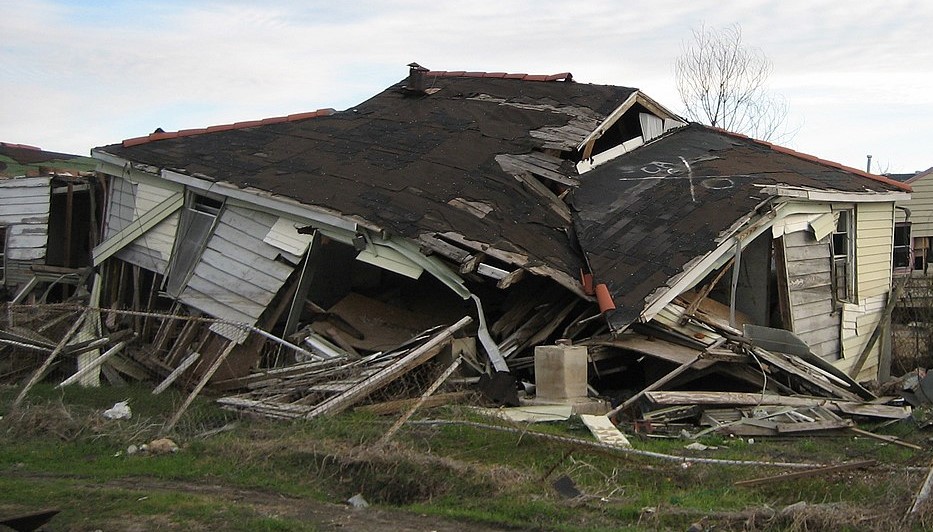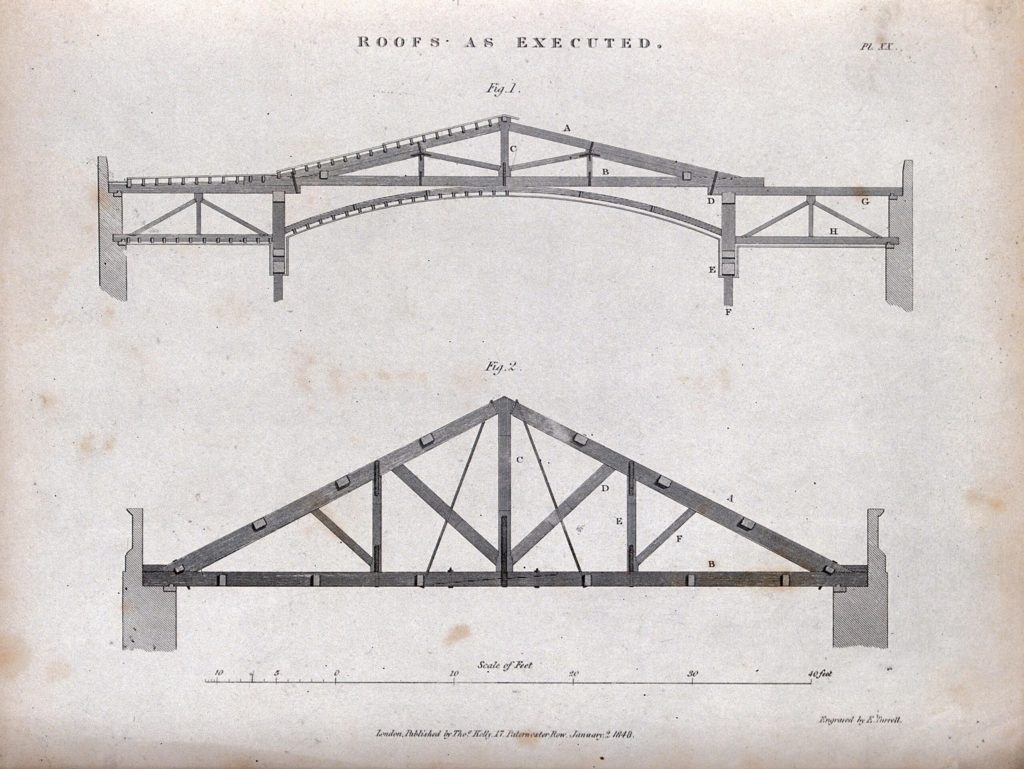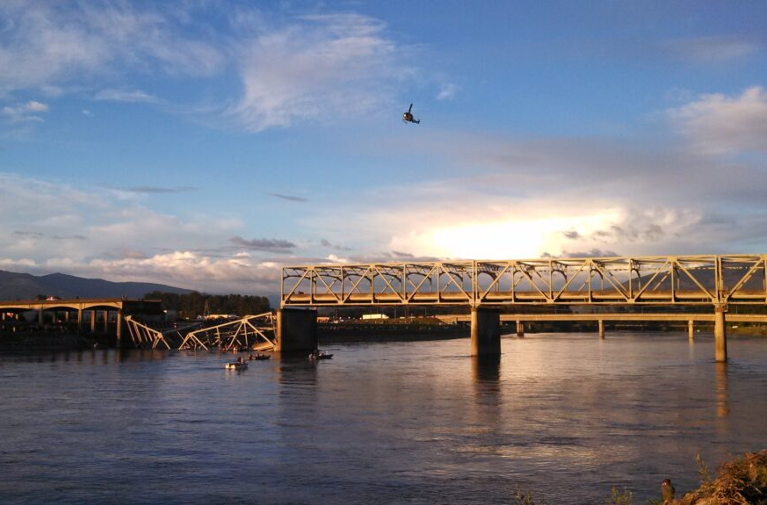It was the twenty-fifth year of the Great Upheaval. The horrors had washed over the world at such a rapid pace that most people turned inward. Gone were the days of reading about far off disasters and conflicts. Gone were the days of news at the ready or even newspapers delivered to your door. Instead, if they were fortunate enough, people found a place they could, as best as could be expected, live a simple little life. And often that meant finding other families to live with—either in the overly large homes of the Consumer Times, or in the neighborhoods that still were viable. It became clear that without help from others—with growing food, with caregiving and schooling, with keeping the community running—very few would make it through.
In one small town, on a block in a neighborhood that still kept on as best it could, lived a family that did everything right. Its gardens grew well and the food grown was shared generously. The father, Nik, a former engineer, helped in maintaining and retrofitting the buildings with few materials—to the point that the older ones regularly referenced some mythical creature called the “MacGyver.” The mother, Joy, was as bright and cheery as her name—even in difficult times—and the children flocked to her. She quickly became the school principal, even drawing children—and hard currency—from nearby neighborhoods.

A wild but thriving settlement of the future.* (Image by Joe Mabel via Wikipedia)
Nik, Joy, and their daughter, Chloe, lived a good life—in a house that seemed future-proof: far out of the flood (and fire) zone, well-insulated and sturdy, and well-kept. But against the odds, during one of the powerful thunderstorms that now frequented the springtime, a microburst formed over their home and ripped it to shreds. Fortunately the family had been in the school and workshop when the storm hit, and all survived, but their home was destroyed.
At first, the three were simply relieved to be alive. But shock quickly replaced relief. Their home, their food stores, their belongings, were all gone. Dazed, they wondered “Why? Why did this happen to us? We did everything right.”
Señora Ana took the family in immediately, giving up her own bed, making tea, and sitting them down to listen to their sorrow.
Chloe seemed least affected—having only known these uncertain times—but her father and mother were upset, angry even, at this turn of events, again asking why did this happen.
But over the evening, Ana gently reminded them of the time the Nelson’s child was stillborn, and how Franklin has been alone since losing his wife to Dengue. And the Smiths, well, the Smiths. Ana left that story untold.

The loss of a house is not the worst horror one can face. (Image from Infrogmation via Wikipedia)
The next morning, Joy and Nik woke up to a large racket in the kitchen. Joy smiled, “I bet Ana is cooking up a feast.” But it was louder than that and they got up and headed into the kitchen.
There half the neighborhood was sipping tea and eating breakfast. “We’ve been waiting for you! We’ve got lots to do and better get started. Franklin has already set up a room in his home until we can build you a new house.” Another chimed in, “Everybody’s already brought some food over to Franklin’s to help you rebuild your supply.” And another, “First we should probably clear the site, salvage what we can, and start making a new building plan.”
No one ever tried to answer Nik and Joy’s question. For there was no answer. But a community built well can accommodate the misfortunes of one of its members, just as a well-built truss can handle the failure of one of its members. Trained as an engineer, this was a lesson Nik understood foundationally, but in his moment of pain, forgot. Though in years to come he would often teach the children about the strength of bridges and the strength of community and how each depended on their members aligning and working together. In good times and in bad.

“A truss is a structure that consists of members organized into connected triangles so that the overall assembly behaves as a single object. Trusses are most commonly used in bridges, roofs and towers.” Definition from the Designing Buildings Wiki. (Image from Edmund Turrell, 1848, from the Wellcome collection.)
Commentary
In this parable, Joy and Nikolai worked hard to stay off the coast, hone valuable skills, build a strong house, and be an integral part of a stronger community. That didn’t prevent disaster from reaching them, but it did limit their suffering, thanks to the community they were part of. It is from their community that they drew their real wealth—support, interdependence (and mutual protection), and opportunity (to survive, thrive, and to live as a human—that is to say in community and using one’s gifts to help others not just oneself).
But the story could have gone differently. I find myself regularly explaining (doomsplaining?) to people that no matter how well you are prepared for the transition coming, you’re just shifting probabilities around. No one can guarantee they make it through the Great Upheaval ahead. Even the superrich with their fortresses may not make it to their safe havens in time or suffer an ignoble death at the hands of their security forces. In this case, the family was out of the house when disaster struck. The community was doing well enough that they could not only take the family in temporarily but help them build a new house. The future will be a series of shifting baselines, where perhaps the gift of a spare bedroom will be an incredible act of generosity. But without members of a community working together, supporting one another, future wellbeing will collapse like a poorly made bridge.

Even the strongest bridges and strongest communities can fail. This truss bridge collapsed after a truck crashed into several trusses. (Martha T via Flickr)
*Actually an image of the Duwamish Cohousing Community in Seattle.




